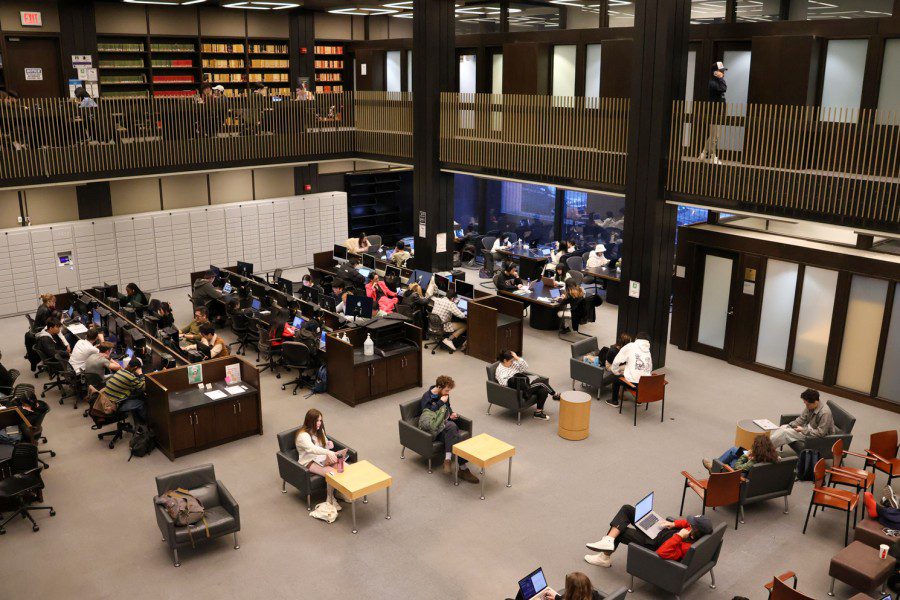Opinion: NYU needs more quiet spaces for students
At prestigious universities, student mental health concerns abound. The university must provide students with more quiet spaces to combat this.
(Yuna Baek for WSN)
November 14, 2022
At each Presidential Welcome and Reality Show, there is an interesting approach to mental health awareness. In song, students were told the different resources available from wellness workshops to short and long-term counseling options. I’d be surprised if you didn’t walk away knowing the Wellness Exchange’s phone number by heart.
But that welcome was months ago, and the physical and mental health support at NYU seems to be a lot of empty promises, and not a lot of actual support. If NYU wants to improve its mental health awareness and support, it should provide more quiet spaces for students across campus.
NYU has made great effort in creating study spaces for students — as we have Bobst Library study rooms, quiet lounges, reserveable spaces in the Kimmel Center for University Life and study spaces across campus. If you’re lucky, you could get your alone time in Tisch Hall’s third-floor lounge or the Silver Center’s second-floor lounge, but those spots are hardly ever quiet. While these rooms are great for focusing on work, a study room that is often fully booked a week in advance doesn’t cut it. Study spaces bring on their own stresses, and your limited hours of quiet shouldn’t be kept to little rooms with a desk. NYU needs to create more dedicated spaces for students to relax in silence.
The reason why we specifically need quiet spaces — not just study spaces — is for the sake of student mental health. Students become increasingly burnt out the further we get into the semester, and a little peace and quiet might alleviate that. According to the Healthy Minds Study, which compiled information from college campuses across the country, more than 60% of college students surveyed during the 2020-21 academic year matched the criteria for at least one mental health issue. Another national study showed that nearly three-quarters of students reported moderate to severe psychological anguish.
With this in mind, several universities, both in and outside of urban areas, have implemented quiet spaces for students.
At the Stevens Institute of Technology in Hoboken, New Jersey, students, instructors and staff have access to a 24-hour quiet space. Students involved in the Student Government Association, particularly many representatives of the religious organizations, were the driving force behind the development of this area. One of the key highlights of this space is that it is “not intended for napping, playing games, doing homework, or eating meals.” Instead, it is to be used for quiet thinking, mindfulness and reflection — all of which are needed for students attending a prestigious university in a constantly moving city.
The Ohio State University’s ElectroScience Laboratory created a Quiet Room in 2017 following a student attack the previous year. This expansion of wellness options demonstrates the potential of preventative measures. In addition to other venues, ESL administrators looked to the Ohio Union’s meditation room for best practices on how to organize, design and offer a supportive environment for students.
NYU shouldn’t have to wait for something like an attack to implement quiet spaces. The university should normalize quiet spaces as a practice in wellness, something just as important as healthy food in the dining halls and enriching curriculum. Since NYU has a non-traditional campus, it makes sense that there are not many physical quiet spaces for students. However, if the university wants to lighten its students’ stress and combat the ongoing mental health crisis across the nation, providing students with access to quiet spaces across campus would be a step in the right direction.
WSN’s Opinion section strives to publish ideas worth discussing. The views presented in the Opinion section are solely the views of the writer.
Contact Molly Koch at [email protected].




























































































































































